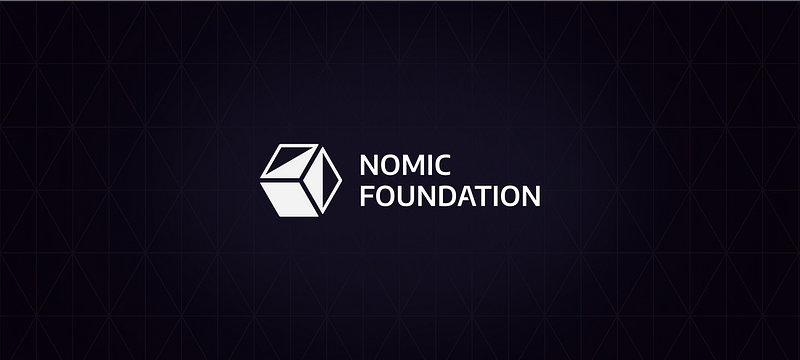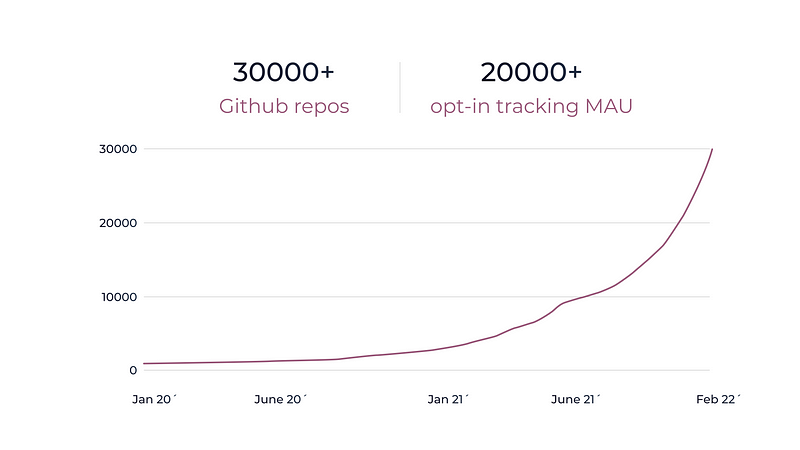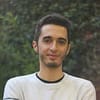Introducing the Nomic Foundation: An Ethereum public goods organization
Nomic Labs (creator of Hardhat) is becoming the Nomic Foundation, a non-profit organization dedicated to Ethereum’s developer platform, on…

- Nomic Labs (creator of Hardhat) is becoming the Nomic Foundation, a non-profit organization dedicated to Ethereum’s developer platform, on a mission to empower developers to decentralize the world.
- The new foundation will expand the Hardhat suite of tools and, most importantly, build long-term infrastructure to catalyze organic growth in the tooling ecosystem, decreasing Ethereum’s dependence on any one organization to build and maintain core components.
- Seeking $30M in funding from the ecosystem. Donations of $15M already secured by the Ethereum Foundation, Vitalik Buterin, Coinbase, Consensys, The Graph, Polygon, Chainlink, Gnosis, a16z, a_capital, and Kaszek Ventures.
We’re thrilled to announce that we’re starting an Ethereum public goods organization focused on improving and expanding Ethereum’s developer platform. We’re launching in close collaboration with the Ethereum Foundation and other founding partners that are contributing $15M in funding. The Nomic Foundation will take over Hardhat and the rest of Nomic Labs’ open engineering projects and related teams. Now that we’ve announced publicly, we’ll be submitting funding proposals to several DAOs to reach total funding of $30M.
How we got here
It was early 2019 when we decided to execute on Hardhat (called Buidler at the time!) as a core undertaking, not just as a side project. The driver for the decision was a concrete product vision that, if built out and adopted, would represent significant value for developers and the Ethereum and crypto ecosystems as a whole. At the time, the business opportunity wasn’t clear to us, but we knew there was great potential value, so we decided to try to bring about that value and see where it took us.
Since then, we’ve always done what we thought is best for Ethereum. That was the core driver: seeing how much we could do to improve Ethereum itself.
As Argentine founders who experienced first-hand what can happen when the legacy system is insufficiently capable of servicing the needs of the people living within it, our involvement in crypto has always been deeply rooted, stretching back to our start with Bitcoin in 2015.
This set of values and motivations made for a natural match when we started working closely with the Ethereum Foundation in June of 2019. Their decision to fund and empower us to build a leadership position within the ecosystem and become part of the decentralized Ethereum team played a pivotal role in getting us to where we are today, and a critical step in Ethereum’s developer experience which saw radical improvements over the past two years.
For believing in us and always prioritizing developer experience, our profound gratitude goes to the management team at the Ethereum Foundation, especially Robbie Bent, Sina Habibian, and Albert Ni who spearheaded this collaboration.
Most importantly, we want to express our gratitude to the Hardhat community. You’ve been incredibly loving, supportive, and proactive in making the Hardhat ecosystem what you wanted it to be. To everyone who recommended Hardhat to a friend, donated to us on Gitcoin, submitted a PR, filed a bug report, or built a plugin: you’ve made Hardhat what it is today.
Through our work on Hardhat to improve Ethereum’s developer experience, it became clear that what drives our motivation and satisfaction is working for Ethereum itself. Our belief in crypto and in Ethereum’s potential to catalyze societal change, as technologists and entrepreneurs, makes this work the most impactful way for us to contribute value to the world long-term. Hopefully, over time, it will contribute to increased prosperity in places like our home country.
We believe the best way for us to maximize the odds of catalyzing this societal change is to focus on developer experience, a critical aspect of Ethereum becoming the backbone for an alternative financial system for the future. Without a good developer experience, the learning curve is steeper and more time-consuming, and productivity is generally lower. New developers leave in frustration, as coding is less enjoyable. Each improvement to the developer experience is an immediate injection of productivity across every single team in the ecosystem, increasing the pace of innovation and growth, creating a powerful, compounding effect over the long term.
This is why we spent 2020 making our best effort to urgently improve Ethereum’s developer experience, in collaboration with the Ethereum Foundation. We were successful: Hardhat became a household name in Ethereum.

If 2020 was about short-term urgency, our proposal for 2021 and beyond was the reverse — a long-term engineering plan to revamp Ethereum’s software development platform and empower the ecosystem to build its own solutions. The ecosystem should be self-directed, able to choose and embrace its own values and priorities. A professional, world-class development platform for Ethereum encourages long-term autonomy and growth, supporting the developer community with resources to build and scale on their own terms, better and faster than before.
This vision needs ample funding and an expanded team, yet several questions remained regarding the relationship between the Ethereum Foundation and Nomic Labs. Who will be responsible for long-term maintenance? How does this work align with Nomic Labs as a business? How reliable will funding be? What will happen to this vision if we can’t access certain resources? Then there were more personal questions for us as founders. What is personally motivating? How do we want our time to be invested?
After a lot of discussions, we understood that we can go beyond individual projects or advisory roles — we have the opportunity to contribute to Ethereum through full-on organization leadership by harnessing resources and coordinating a team to execute on high-leverage ventures. Housing this vision and the associated projects inside a new non-profit would address all of the open questions.
We want to make meaningful contributions to Ethereum, and launching a dedicated organization is the best way for us to go all-in on this vision. Driven by this motivation, Nomic Labs is transitioning to a non-profit model in the form of the Nomic Foundation to continue working exclusively on Ethereum itself, aiming to build something more valuable than any specific software project: a new Ethereum public goods organization.
We want to help advance Ethereum as a whole, not silo ourselves to a single tool or application. That means making Hardhat one of multiple responsibilities within a bigger scope of more ambitious and impactful objectives. We think this is one of the many truly striking things about Ethereum: we don’t need anyone’s permission to go after these responsibilities. The ecosystem will be the judge by opting to use, or not use, our software.
Organizational vision
The Nomic Foundation’s mission is to empower developers to decentralize the world. When it comes to developer experience, we know that to achieve world-class results, an engineering organization must prioritize it as a fundamental core value. It’s a process that involves an empathic product perspective about user needs applied through a hardcore engineering lense — a rare capacity that requires a thoughtful approach to instill within an organization. This is why a dedicated organization makes sense, one that is designed and tailor-made for this purpose, with the right skills, values, and culture at its core.
Big picture, our objective of supporting Ethereum’s growth to empower developers goes beyond simply supporting Ethereum’s developer platform — it’s also about decreasing its dependence on any one organization to build and maintain core components. We envision a future where many organizations make meaningful permissionless contributions to different kinds of Ethereum public goods. A diverse set of perspectives, core competencies, and organizational dynamics that organically drive Ethereum forward, sustaining and increasing its neutrality — a key aspect when it comes to enabling decentralization.
To realize this future, Ethereum must continue to strengthen its support structures. For the core development platform components, more organizations must support the Ethereum Foundation’s existing efforts. We aim to be one of the many organizations that will collaborate long term on Ethereum public goods.
Engineering vision
When it comes to equipping the ecosystem with value that will increase its strength over the long run, building springboards in the form of platforms is a more effective strategy than building specific software to attack specific developer needs. Given the size and innovation pace of the ecosystem, there’s no way to foresee exactly what needs developers are going to have as things scale, but we know what engineering foundations the ecosystem will need in order to build its own solutions.
Our plan is based on four strategic pillars of the ecosystem, each of which offers an opportunity to leverage a platform to empower the ecosystem to keep building open-source infrastructure.
For each of these pillars, we will build a platform. The four ecosystem pillars and platform opportunities we’ve identified are:
- Solidity
- EVM tooling
- Local development environment
- Ethereum connector library
The projects
- Slang: a new Solidity development compiler With a fresh set of priorities focused around development rather than mainnet, Slang will become a platform for Solidity tooling, providing all the infrastructure and flexibility that any tool handling Solidity code could need.
- EVM tooling: Rethnet The local development network used by developers is the hidden-in-plain-sight key component to enable all EVM tooling. Using insights and lessons learned from Hardhat Network, we’ll create a building block for other tools to build on top of what Hardhat started. This will enable the ecosystem to build tools that were previously too costly or difficult to build and maintain effectively for any EVM language, including Solidity.
- Local development environment: Hardhat is on its way to becoming the first fully-featured Ethereum development environment that is integrated end-to-end. By having deep integrations across the entire development stack — source code editor (Hardhat VSCode), deployment solution (Hardhat Ignition), development network (Hardhat Network), and build/testing workflow (Hardhat Runner), developers will be well equipped to build powerful extensions to their workflow that increase their productivity according to their exact needs, and to then share them with the ecosystem in the form of plugins.
- Ethereum connection library: web3.js as a frontend platform Web3.js is being revitalized into a great project. By revamping the library and focusing on growing the community and ecosystem around it, supported by an extensible architecture, it’s possible to make it a lasting source of value — like React in the front-end world, but for dapps. With a new community website acting as a hub connecting community spaces, support spaces, educational resources, extensions, and related projects. Combined with an active ecodev effort (workshops, talks, contests, and incentives), this will create a source of leverage for the ecosystem — providing better troubleshooting, faster developer training, more reusable code, and the possibility of extending the library. This is currently being spearheaded by ChainSafe.
We’ve published posts with more details about some of these projects, and we invite you to check them out if you haven’t.
As the most ambitious projects, Slang and Rethnet will help ensure the EVM has a strong and bright future. However, the advent of entirely new development platforms in many Ethereum L2s means there is a lot more to do beyond this core plan. We must make sure Ethereum developers are serviced where they are at, not just where the EVM is. Once the core plan is in motion, it’s still important that we experiment, prototype, and identify other promising platforms and support the teams behind them, creating effective L2 development platforms that assist Ethereum’s growth.
Funding
Our engineering plan had funding available in the context of our relationship with the Ethereum Foundation, but as mentioned, there were many unanswered questions about the future of projects which have critical long-term importance. The funding we received from the Ethereum Foundation was extremely valuable and got us to this point, but along the way we identified multiple shared objectives when designing the funding model of this new organization.
The biggest shared objective centered around reducing dependency on annual funding, which comes with a number of inherent drawbacks. Yearly funding can:
- Create pressure on short-term results versus long-term thinking
- Result in less autonomy and reduced operational flexibility
- Force less risk-taking, incentivizing bets with shorter time horizons
- Allow market volatility to impact the availability of funding
When it comes to building an organization, rather than funding specific engineering projects within an existing organization, the limitations of uncertain funding make a real difference. As a result, we are raising $30M up-front.
Initially, we plan to build a 30-person organization that can invest aggressively into Ethereum public goods through a full crypto winter, seeking additional contribution rounds as needed to keep growing as required.
Sources of funding
The Ethereum Foundation is leading this round of contributions with $8M, alongside contributions from Vitalik Buterin, Coinbase, Consensys, The Graph, Polygon, Chainlink, Gnosis, a16z, a_capital, and Kaszek Ventures. These donors make up $15M, and we’re aiming to raise $15M more.
Generally we think that allocating capital to our foundation makes strategic sense for any protocol treasury that is aligned long term with the growth of Ethereum.
We’ll provide services to the Ethereum community that will:
- Continue the maintenance of critical infrastructure used to build most protocols (Hardhat).
- Increase developer productivity for every team in the ecosystem.
- Accelerate developer onboarding to Ethereum, increasing the size of the experienced engineering hiring pool and making time-to-productivity shorter for new hires.
- Accelerate the pace of innovation and the number of products being built.
- Increase market volume driven by new products and users.
This grows the market for everyone.
VC funds making a… donation?
Yes, that’s exactly what Andreessen Horowitz, a_capital, and Kaszek Ventures are doing. They are not making an investment where they expect a direct return since this is a non-profit venture. They want to support the Ethereum ecosystem and us, so they’re making a small contribution, and most importantly, making their operational support resources available to us.
Governance
How this organization and treasury will be governed was the topic of deep discussion, resulting in a setup that has built-in checks and balances at multiple levels.
The Nomic Foundation will operate as a Swiss foundation, subject to the regulatory control of Swiss authorities. The foundation’s purpose will be established in its foundational documents, making the organization unable to deviate from its focus on Ethereum developer experience without the board becoming legally liable.
The Ethereum Foundation will remain on the board during an initial period to provide oversight and input while the Nomic Foundation pursues its expanded mission, after which the Nomic Foundation will move towards full autonomy. The board will be composed as follows:
- Franco Zeoli. Co-founder & CEO.
- Patricio Palladino. Co-founder & CTO.
- Josh Stark. Ethereum Foundation representative.
- Robbie Bent. Independent board member.
- Swiss counsel.
The board is supportive and excited about the plan outlined in this post.
Advisory board
On the topic of getting operational support to increase our odds of success, we're working with a group of advisors that will collaborate with us:
Matías Woloski, Co-founder & CTO at Auth0
Matías is the CTO and co-founder of Auth0, an identity platform for developers recently acquired for $6.5b. Auth0 pioneered remote-first culture and today has more than a thousand employees and tens of thousands of customers all over the world. Matías has already been incredibly valuable in helping us plan the scaling of our engineering team.
Hernán Kazah, Co-founder at MercadoLibre & Managing Partner at Kaszek Ventures
In addition to founding latam’s most successful VC fund, Hernán is also co-founder of MercadoLibre, latam’s biggest company (NASDAQ:MELI, $50b mkt cap). He’s been generally advising us on bootstrapping and scaling an organization for the long term.
Jake Brukhman, Co-founder & CEO at CoinFund
An engineer by trade, Jake founded one of the first crypto funds in 2015 and has been an advisor to many well-known projects in the ecosystem. He’ll be helping us with treasury management.
Donations welcome
The non-profit nature of the Nomic Foundation makes fundraising more challenging than it traditionally is in crypto, and given the scale of what we’re aiming to build we will need all the support and ammunition we can get. If you’re an organization or individual who would like to contribute a meaningful amount of funding to Ethereum public goods, please get in touch.
Closing thoughts
We’re extremely excited to formally make Ethereum our complete focus. We feel deeply aligned with its vision and potential. Our journey thus far has been extremely rewarding, and we strive to continue executing with the same (and hopefully increased) level of quality that we are known for. We don’t take for granted the ecosystem’s support of Hardhat, and we intend to keep delivering value to renew and sustain that support over the coming years.
The Nomic Foundation team.

